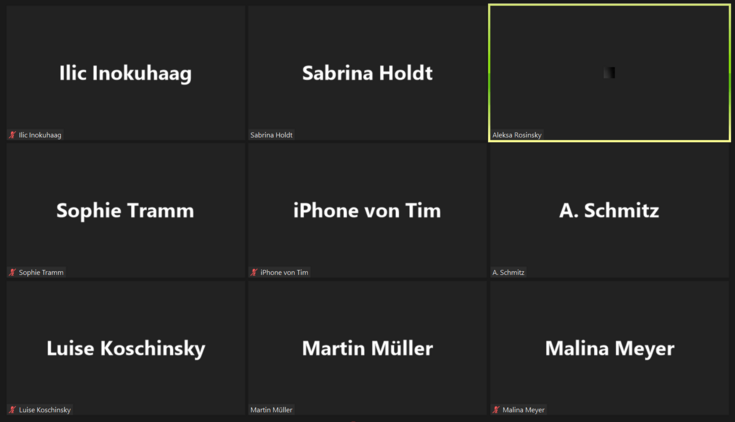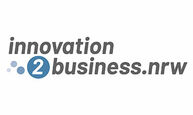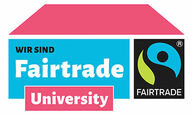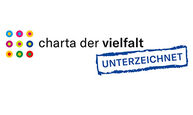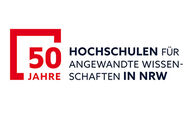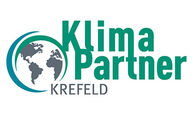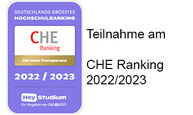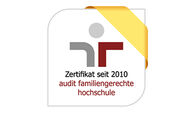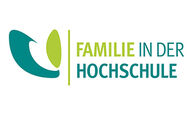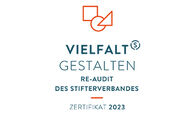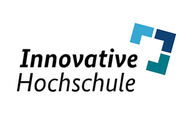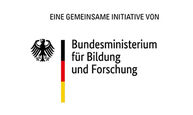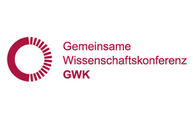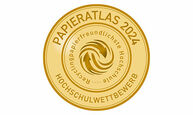A look behind black tiles
Prof. Dr. Hahn has been a professor of business administration, in particular organizational development and corporate management, at the Faculty of Business Administration and Economics since January 2017. At the end of 2017, she received the HSNR teaching award for "Outstanding performance in foundation courses and large group courses".We interviewed Prof. Dr. Hahn about her experiences around the course "Organization", which is actually face-to-face, but which she had to switch to digital at the beginning of the pandemic. It is a compulsory course that is taken by up to 400 students from six Degree programmes, around half of whom are first-year students.
What challenges did you face when you suddenly had to hold your major event purely digitally?
I saw three main challenges: First, engaging with students digitally despite the large group and being able to both give and receive feedback. Second, to encourage students to interact with each other and thus break down digital anonymity. And third, to encourage self-organization - especially among first-year students - in the sense of "from teaching to learning," i.e., support for independent learning.
From the beginning of the "Corona semesters," studying mostly meant sitting alone in front of a PC. What concept and idea did you use to counter the threat of students becoming isolated?
We know from the psychology of learning that learning in small groups leads to more stable learning situations, which in turn can significantly increase students' motivation. That's why I moved the idea of learning groups, which had already existed in this way in the face-to-face course, into the digital space. With the help of Moodle, I formed digital learning teams to stimulate interaction between the students. In my course, these were about 20 groups (up to 20 students per group) that lasted throughout the semester. The groups met in the virtual space on fixed dates to jointly explore the content of the course.
Were the students grouped by you purely at random or were there criteria?
In the first run, the assignment of students was indeed random. However, the feedback from the students on this was that they would like to get to know fellow students from their own Degree programme. Therefore, from the next semester on, I took the trouble to assign students manually - depending on the Degree programme and semester. Some learning groups thus remained beyond the actual course.
What methods of teaching education did you use and for what purpose? How did you initiate learning and guide work in the small groups?
First of all, it was important to me that the students in their learning groups see themselves as a team. To do this, I led a kind of "team building." The students introduced themselves to each other, established working rules together, and agreed on which communication channels they wanted to use for which purposes. They agreed among themselves on which day and time they would "meet" digitally each week for group work. A group leader was chosen who, among other things, took on the task of keeping an eye on deadlines and uploading the joint solutions on time.
The procedure for the students was then the same every week: Loosely based on the "think-pair-share method", the students first worked on new content alone using screencasts (video or audio clips) and solved application tasks for the advanced course. For each new content, there was also a Moodle test for self-testing. In their - self-created - digital group meetings, the students then worked together on group tasks. In doing so, they analyzed the individually acquired learning content and also assessed new facts, e.g. in the form of short case studies. Both the individual solutions to the application tasks and the solutions to the group work were uploaded to Moodle. I then prepared the answers and solutions in anonymous form for the plenum, in order to be able to give specific feedback and initiate discussions. Typically, I presented a particularly successful solution and explained what was good about it, as well as showing a solution where some things could be improved. In addition, the students had the opportunity to ask questions anonymously via the Moodle feedback tool, which I then also answered in my screencasts.
I used very different formats for the assignments: Depending on the topic, the solution to the assignment had to be submitted, for example, in the form of a PowerPoint presentation set to music, discussed in the group forum, worked out in Etherpad or later also via conceptboard or padlet, or assessed in the sense of peer feedback.
Between the weekly meetings in the small group, there were Zoom appointments for reflection, for so-called "learning stops" in the plenum. The aim was to put the learning content once again into context and to clarify any points that remained unresolved.
What advantages does the introduction to stable digital small groups bring for the students?
I see the biggest advantage in the socializing function: anonymity is removed by making students feel they belong to a group. The black tiles are exchanged for faces. The interaction in the protected space of the learning group conveys a feeling of connectedness. In addition, a kind of positive peer pressure is created: it is noticeable if someone is not there or does not participate. Quiet, reserved students are more likely to say something in the small groups than in the plenum. Students who already have a good command of the learning content deepen their own knowledge through teaching education by explaining something to the others. In contrast, students who are not yet able to comprehend certain content get it explained to them by their fellow students in a different way than I might have done. Last but not least, students hone their social skills through constant - albeit only digital - interaction. The digital learning groups make it easier to communicate with each other and with me as a lecturer. The fact that I sometimes join in and am thus present as a lecturer makes the students feel valued, which also contributes to their motivation.
What advantages do you see for yourself and your teaching education?
In the learning groups, I can talk to and discuss with the students in a completely different way than in the large plenum with several hundred students. I can assess the learning levels much better and get a good overview of where the students currently stand through the solutions that the learning groups upload. I evaluate what is uploaded to Moodle and can thus see which topics I should go into more depth on. In my screencasts, I address questions that are still open and give concrete constructive feedback on the uploaded solutions. I experience a relief in the respect that the students answer many questions themselves and help each other. That way, everything doesn't run up on my end.
When face-to-face events are possible again, do you go back to pre-Corona times? Are you thinking about a hybrid event format?
Through the experiences I have had, I feel encouraged that the concept of the "inverted classroom" has success with students and can lead to better learning outcomes. Guided by screencasts, for example, the students first develop subject content on their own, which they then discuss in their learning group. Regardless of whether they are currently learning digitally or will soon be back in person, there is still plenty of room in the plenum to discuss with each other, apply the knowledge they have acquired, and think further. I can't yet say whether I will switch my large events to "hybrid". I'm still undecided. Ultimately, the question is how to define hybrid teaching education: I imagine it will be a challenge to supervise students in the presence and in the digital space at the same time. Probably a trial and error process will reveal what a good balance of analog and digital might look like. What surname the format will have is probably beside the point.
Every trial of something new always involves perceived and actual risks. Of course, this is also of interest to lecturers who want to adapt your idea or try out something similar. What risks can you name?
Initially, I felt that the digital learning groups were slipping away a bit: The learning groups were looking for their own communication channels and not strictly using the Moodle group forums I had set up. I had to learn to let go and get used to "only" being able to view the uploaded learning results. In the meantime, however, I have found a good way to connect to the digital groups during the learning processes and to coordinate with the groups when and how we "meet" digitally. And I align my screencasts with the topics that obviously need advanced courses or further input, which I derive from the uploaded solutions.
Otherwise, the challenge is to keep students engaged throughout the semester, just as it is in a face-to-face setting, and to align the curriculum in a way that motivates students to learn. Here, the digital space may even offer more formats for teaching content and thus more variety and positive incentives for the students.
How much time did you spend on conception and implementation in the course of the semester?
The initial effort in the first digital semester was of course very high and the time required was great. I had to create the learning materials and, especially in Moodle, also create all the groups with the corresponding submissions, tests, etherpads, and so on. In the meantime, I can divide my time differently and concentrate much more on the technical support and the supervision of the students in their groups and in the plenum. However, this has always been true for my face-to-face courses as well, since I generally don't do traditional frontal teaching. For the digital space, I also didn't want to do a lecture monologue on Zoom. That's not how teaching education and learning works for me. For me, the focus is on guided learning. Feedback from the students is particularly important to me: What tools do they benefit from? What do they need to be able to work through the content better? What adjustments can we make? Using the Moodle feedback tool, students were able to provide anonymous re-registration on a weekly basis, including on the learning opportunities offered. This enabled me to optimize on an ongoing basis.
How would you like to develop your concept further, for which you were awarded the teaching prize in 2021?
It would be beneficial to be able to form even smaller learning groups. The ideal size would be around six students. However, the administration costs are simply too high for this. Dividing up to 400 students into teams of six and supervising them alone is almost impossible. That would only be possible with personnel support. In addition, I would like to accompany the learning groups even more intensively and I would like to network them even more - in the sense of peer feedback. The use of game-like elements, i.e. gamification, would certainly be a great motivator: the development of challenges so that the learning teams could compete against each other is one of my visions for the future.
Another big topic in my eyes is the examination. Here, too, I have some ideas on how the exam format can promote semester-long learning: For my digital teaching format, I can well imagine a portfolio exam in the medium term to focus more on the learning process and less on the final result. So there is still a lot to do.
Thank you for the interview.
Published in: 1st expenditure: the interview appeared in the LeNi higher education didactics supplement of the November 2021 issue of NIU.


